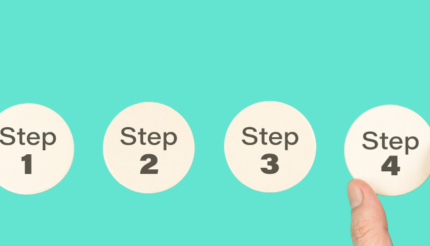Congratulations! You have leads coming in from your inbound and outbound marketing campaigns. Now, let’s learn how effective communication can move these leads through the funnel and convert into sales.
The key to being a successful salesperson is active listening. When you listen to your prospects attentively to understand their needs, you can tailor your responses accordingly and maintain an open conversation. In this article, you’ll learn some of the essential questions to include, so as to facilitate dialogue and create a connection to your prospect and, ultimately, to close more sales.
Essential Questions to Include in Your Script
![]() A successful sale begins with a prepared script of leading questions so that you can begin to understand your prospect and what will make them buy. Create a script and practice until it becomes a natural part of your conversation.
A successful sale begins with a prepared script of leading questions so that you can begin to understand your prospect and what will make them buy. Create a script and practice until it becomes a natural part of your conversation.
Here are some questions to include in your conversation to lead to a positive outcome:
Before the sales conversation:
1 Authority Question
Helps you be sure you’re meeting the right people to close the sale: “[Name] Is there anyone other than yourself who will be involved in making this decision?”
It is important to determine whether the prospect has the actual authority or influence in the decision-making process. “May I ask what the evaluation and purchasing process is for new solutions?”
This question helps you understand their purchasing structure and find out the stakeholders in the decision-making process, so that you can target the key players. This is an effective approach to facilitate a successful sale.
2 Finance Question
A polite way to ask whether they have the money): “Obviously, finances are important, [Name]. Can I ask what budget has been allocated for this purchase/project/endeavour?”
It is essential for you to determine the budget so that you can position your products appropriately to make the sale.
This way, you won’t try to sell your prospects something they can’t afford. If their budget is too low, you can explore options by asking, “[Name], if we propose some alternative solutions slightly above your budget, is there some flexibility?”
During the sales conversation:
3 Temperature-checking questions
Are simply an opportunity to gauge if you are on the right track or whether you need to adjust your approach. “How does that fit with what you had in mind?” If you have proposed multiple options, ask “Which of the solutions do you feel would best resolve your current challenges?” Follow this question up with a clarifying one. “Based on what you’ve told me, [Name], would either [Solution A] or [Solution B] suit your needs best?”
4 To move the sale forward, ask more specific detailed questions.
Here are some examples:
-
- “Can we get started on that?”
- “In order to progress, shall we discuss the next steps?”
- “May I confirm my understanding so that we can meet your timeline and budget.”
- “Is it okay if I cover what we need to do to get that underway?”
Leading Conversations with Clarity
![]() When you have conversations with your prospects, be clear about the value your solution can bring to resolve their challenges – what’s in it for them. Ensure they have all the information necessary to make an informed buying decision: . what value will your products/services bring them, and how much will it cost them to get these benefits.
When you have conversations with your prospects, be clear about the value your solution can bring to resolve their challenges – what’s in it for them. Ensure they have all the information necessary to make an informed buying decision: . what value will your products/services bring them, and how much will it cost them to get these benefits.
Listen actively to your prospect whilst observing their tone and body language. This will help you guide the conversation towards the sale. Anticipate objections and resolve them prior to moving to close the sale.
Objections
![]()
Here are four quick tips to help you handle objections professionally and increase your chances of winning the sale.
1 Understand and empathise
Understand and empathise with the objection without disputing your prospect’s view. Don’t simply fight it, or deny what they are saying. This way, you can calm the situation and keep the conversation moving in a positive direction.
2 Explore
Explore if there are any other concerns. This will help you dig into the real, not-so-obvious reasons that could prevent the prospect from buying.
3 Build
Build on your questions and their responses, to determine the core issue. Use discovery questions like “If the budget/timeline was not a problem, would you go ahead?” If they continue to hesitate, you can dig deeper, but keep the question ‘soft’: “May I ask what the problem would be?”
4 Suggest
Once you get to the bottom of the issue, suggest that you and your prospect invest more time if needed, to ensure you can present the optimal solution.
Objections are an important part of the sale process. Listen to a prospect’s misgivings and adjust your sales techniques. Look at how you discuss value, costs, benefits, etc, to make sure you communicate with clarity. Present information early in the sale to counter any objections upfront.
How to Handle Inbound Marketing Leads
![]() In addition to your script, there are ten more best practices for answering emails and calls.
In addition to your script, there are ten more best practices for answering emails and calls.
1 Smile
Smile prior to picking up the phone. People can hear the warmth, friendliness and confidence in your voice. Similarly, look at how you address emails before pinging off a message to a prospect.
2 Answering the Phone
Answer the phone after two or three rings. If you answer too quickly, you may appear desperate, whereas if you wait too long, it might seem unprofessional.
3 Set the Tone
Set the tone by answering politely and professionally. Teach your team to adopt a consistent phone etiquette and use a simple script: “Good morning / afternoon / evening. Thank you for calling [Company Name]. This is [Name].” Encourage your team always to ask for permission before putting a potential client on hold.
4 Actively Listen
Actively listen and give verbal cues that you’re paying attention. This gives the prospect the confidence that you are present and engaged.
5 Ask Discovery Questions:
“Thank you for your call. So I can best assist you, may I ask you a couple of questions?”
6 Present the Facts
Present all the facts, advantages and benefits in a way that resonates with the prospect’s language.
7 Gauge
Gauge the temperature of the sale. Present your solution and test how they feel about it using the questions suggested in the sales conversation above.
8 Use an ‘Assumptive Close’
Don’t let people choose between yes or no. Be confident that the sale has closed and ask detail-oriented questions to move to the next step.
9 Recap the Key Elements Covered in the Call
Set realistic expectations, and outline the next steps. Thank the caller for their time.
10 Wait for the Prospect to Hang Up
Let the prospect hang up first so they don’t have to listen to the silence after the conversation has ended.
What’s Next?
Review your sales process with your team so that you can keep continually improving. Consider hiring people to ‘mystery shop’ your business to understand what actually happens when someone tries to buy from you. What is your prospect’s buying experience?
If you want to take this a step further, you can do the same to your competitors to see how they position themselves.
Once you have identified any changes, start by ensuring that your team use a consistent, professional standard across all platforms, whether dealing with prospects via email, in text or WhatsApp messages or phone calls.
If you take all these tips on board, you are sure to close more sales.





